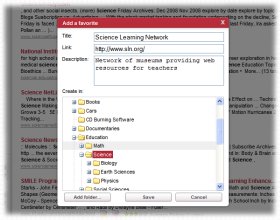|
Education
Web
Viewing 1-3 of 3 total results
• 7.3.spi.13. recognize the definitions of modifications on the physical environment (i.e. global warming, deforestation, desert, urbanization). • 7.3.spi.14. distinguish between types of maps. (i.e. political, physical, climatic, land-use resource, contour, elevation, top...
1
0
• 7.3.spi.13. recognize the definitions of modifications on the physical environment (i.e. global warming, deforestation, desert, urbanization). • 7.3.spi.14. distinguish between types of maps. (i.e. political, physical, climatic, land-use resource, contour, elevation, topographic.) • 7.3.spi.15 interpret a map indicating scale, distance and direction. • 7.3.spi.16. demonstrate understanding of characteristics and implications of a diverse global culture. At Level 3, the student is able to • 7.3
6
0
http://www.state.tn.us/education/ci/ss/doc/SS_Grade_7.pdf#page=6
www.state.tn.us/education/ci/ss/doc/SS_Grade_7.pdf#page=6
<span class="highlight">topographic</span> <span class="highlight">maps</span>. d. Discuss applications of current geographic techniques in mapping such as GIS and GPS. 7.3.02 Know the location of places and geographic features, both physical and human, locally, regionally and globally. a. Identify the location of Earth's major physical characteristics such as continents, landforms, bodies of water, climate regions, vegetation, and natural resources. b. Identify the location and size of major human features such as cities, political units, and countries. c. Explain why
9
0
http://www.state.tn.us/education/ci/ss/doc/SS_Grade_7.pdf#page=9
www.state.tn.us/education/ci/ss/doc/SS_Grade_7.pdf#page=9
• 7.3.spi.13. recognize the definitions of modifications on the physical environment (i.e. global warming, deforestation, desert, urbanization). • 7.3.spi.14. distinguish between types of <span class="highlight">maps</span>. (i.e. political, physical, climatic, land-use resource, <span class="highlight">contour</span>, elevation, <span class="highlight">topographic</span>.) • 7.3.spi.15 interpret a map indicating scale, distance and direction. • 7.3.spi.16. demonstrate understanding of characteristics and implications of a diverse global culture. At Level 3, the student is able to • 7.3
dimensional region * volume: a measure of the size of a three-dimensional object * significant figures: digits that appropriately express the precision of a measurement or quantity derived mathematically from one or more measurements Manipulation and Observation 7.2.6 Read analog and digital...
1
0
dimensional region * volume: a measure of the size of a three-dimensional object * significant figures: digits that appropriately express the precision of a measurement or quantity derived mathematically from one or more measurements Manipulation and Observation 7.2.6 Read analog and digital meters on instruments used to make direct measurements of length, volume, weight, elapsed time, rates, or temperatures, and choose appropriate units. Communication Skills 7.2.7 Incorporate circle charts, bar and line graphs
4
0
http://dc.doe.in.gov/Standards/AcademicStandards/PrintLibrary/docs-science/2006-science-grade07.pdf#page=4
dc.doe.in.gov/Standards/AcademicStandards/PrintLibrary/docs-science/2006-...
dimensional region * volume: a measure of the size of a three-dimensional object * significant figures: digits that appropriately express the precision of a measurement or quantity derived mathematically from one or more measurements Manipulation and Observation 7.2.6 Read analog and <span class="highlight">digital</span> meters on instruments used to make direct measurements of length, volume, weight, elapsed time, rates, or temperatures, and choose appropriate units. Communication Skills 7.2.7 Incorporate circle charts, bar and <span class="highlight">line</span> graphs
Microsoft Word - ssstd7.docssstd7.pdf
the data on-line and add information to the base map. Analyze the maps created to note any spatial patterns in farm concentrations, changes over the last few decades, and hypothesize possible reasons. Overlay the maps with additional GIS data showing precipitation, land topogr...
1
0
the data on-line and add information to the base map. Analyze the maps created to note any spatial patterns in farm concentrations, changes over the last few decades, and hypothesize possible reasons. Overlay the maps with additional GIS data showing precipitation, land topography, and any other factors that students include in the hypothesis. Write conclusions resulting from the analysis. Sources for GIS data include the Kansas Data Access and Support Center, in conjunction with the Kansas
1
0
http://www.ksde.org/LinkClick.aspx?fileticket=giNc9khF9Cs%3d&tabid=1715&mid=8016&forcedownload=true#page=11
www.ksde.org/LinkClick.aspx?fileticket=giNc9khF9Cs%3d&tabid=1715&mid=8016...
the data on-<span class="highlight">line</span> and add information to the base map. Analyze the <span class="highlight">maps</span> created to note any spatial patterns in farm concentrations, changes over the last few decades, and hypothesize possible reasons. Overlay the <span class="highlight">maps</span> with additional GIS data showing precipitation, land topography, and any other factors that students include in the hypothesis. Write conclusions resulting from the analysis. Sources <span class="highlight">for</span> GIS data include the Kansas Data Access and Support Center, in conjunction with the Kansas
|
